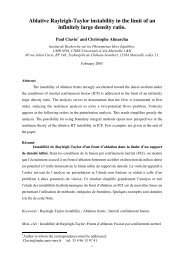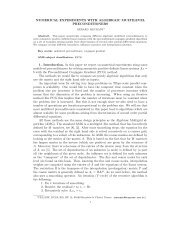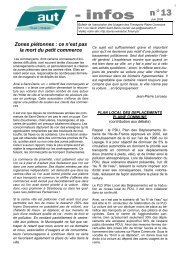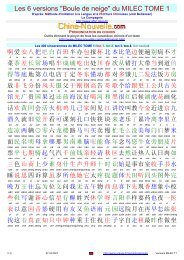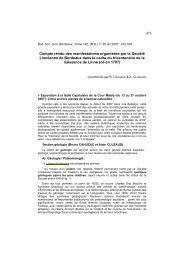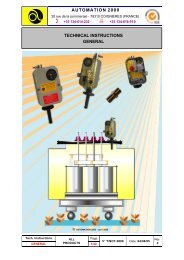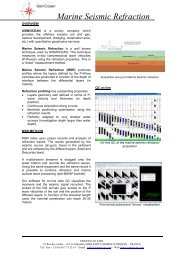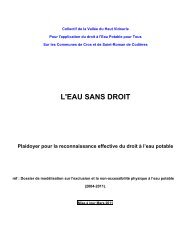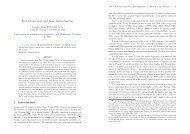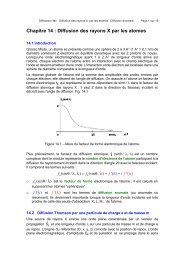Advanced Life Support Research and Technology Development Metric
Advanced Life Support Research and Technology Development Metric
Advanced Life Support Research and Technology Development Metric
You also want an ePaper? Increase the reach of your titles
YUMPU automatically turns print PDFs into web optimized ePapers that Google loves.
the total mass of the generating power system. Thus, for a nuclear power system on anindependent l<strong>and</strong>er which, on average, delivers 100 kW of electrical power <strong>and</strong> has aoverall mass of 8,708 kg (Mason, et al., 1992) 1 the power mass penalty is 11.48 W/kg.This power-mass penalty effectively assigns a fraction of the power system mass to apower-using subsystem in place of that subsystem’s power requirement. In like manner,mass penalties to account for heat rejection <strong>and</strong> volume within a pressurized shell aredefined. Work is also in progress to define a crew-time-mass penalty to convertmaintenance time to mass, but the derivation for this conversion factor is not as obvious.A form developed by Drysdale (1998) is used in this work. The definition of equivalentmass for a system is the sum of the equipment mass plus the power, volume, thermalcontrol, <strong>and</strong> crew time as masses.BackgroundMars Reference BaselineAs per the DRM (Hoffman <strong>and</strong> Kaplan, 1997, <strong>and</strong> Drake, 1998), a vehicle with arigid shell, the Mars Transfer Vehicle (MTV), transports the crew from Earth orbit to thesurface of Mars. The MTV, once on the surface of Mars, is incorporated into the surfacehabitat. In addition to the MTV, the surface habitat includes an additional dedicatedl<strong>and</strong>er which provides some additional living volume for the crew during the mission’sexploration phase. The additional pressurized volume used solely on the surface employsan inflatable structure, as proposed for the TransHab 2 program, as per the DRM. Aseparate Earth Return Vehicle (ERV), which is initially deployed ahead of the crew,transports the mission personnel back to Earth. Thus, two long-duration life supportsystem hardware sets were assumed for each mission. The life support systems employedduring descent to Mars, ascent from Mars, which uses a separate vehicle in the currentDRM, <strong>and</strong> within the Earth-return capsule are omitted. Such systems, especially withinthe ascent vehicle <strong>and</strong> Earth-return capsule, are expected to operate for no longer than afew days <strong>and</strong>, therefore, are likely to use expendable, open-loop technologies. Alternateassumptions might be made, including use of a reusable transit vehicle, <strong>and</strong> a single shipsetfor the surface. However, the annual resupply mass (consumables) is about a third of thefixed mass, so this might not be economical. The DRM defines the overall mission as:1 The actual mass quoted here has been adjusted slightly to account for some differences between thework listed in the reference <strong>and</strong> the desired system.2 The TransHab is a concept to create an inflatable module with greater volume than a st<strong>and</strong>ardInternational Space Station (ISS) rigid module while using no more volume during launch than iscurrently available within the Space Transportation System (STS) Orbiter payload bay. Effectivelythe TransHab has a non-rigid outer structure which is inflated or deployed once the vehicle reachesorbit. Internal outfitting is accomplished by deploying folded structures <strong>and</strong>/or by movingappropriate equipment into the shell’s volume once it deployed. Drake (1998), page 43, provides apicture of a transfer vehicle with a TransHab crew compartment.




